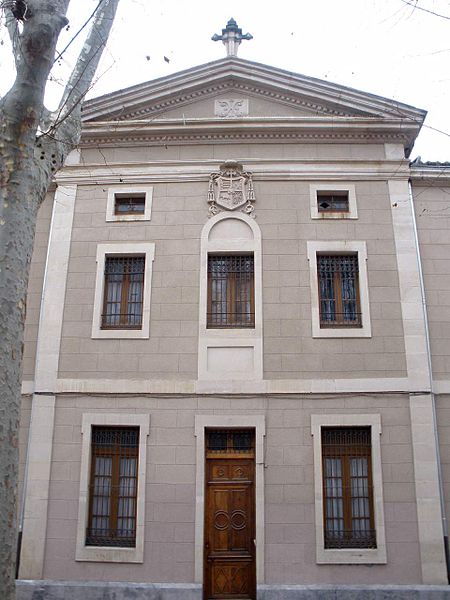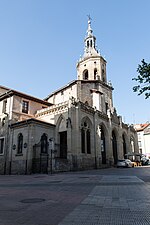Convento de las Brígidas, Vitoria-Gasteiz
1909 establishments in Spain2007 disestablishments in the Basque Country (autonomous community)Bridgettine monasteriesBuildings and structures in Vitoria-GasteizConvents in Spain ... and 3 more
Neoclassical architecture in SpainReligious buildings and structures completed in 1909Relocated buildings and structures in Spain

The Convento de las Brígidas (Basque: Brigiden komentua) is a former Bridgettine convent in Vitoria-Gasteiz, Basque Country, Spain. The convent, whose current building dates from the early 20th century, has been vacant since 2007.
Excerpt from the Wikipedia article Convento de las Brígidas, Vitoria-Gasteiz (License: CC BY-SA 3.0, Authors, Images).Convento de las Brígidas, Vitoria-Gasteiz
Magdalena kalea/Calle Magdalena, Vitoria-Gasteiz Lovaina
Geographical coordinates (GPS) Address Nearby Places Show on map
Geographical coordinates (GPS)
| Latitude | Longitude |
|---|---|
| N 42.8467 ° | E -2.6772 ° |
Address
Urkide ikastetxea/Colegio Urkide
Magdalena kalea/Calle Magdalena
01008 Vitoria-Gasteiz, Lovaina
Autonomous Community of the Basque Country, Spain
Open on Google Maps











